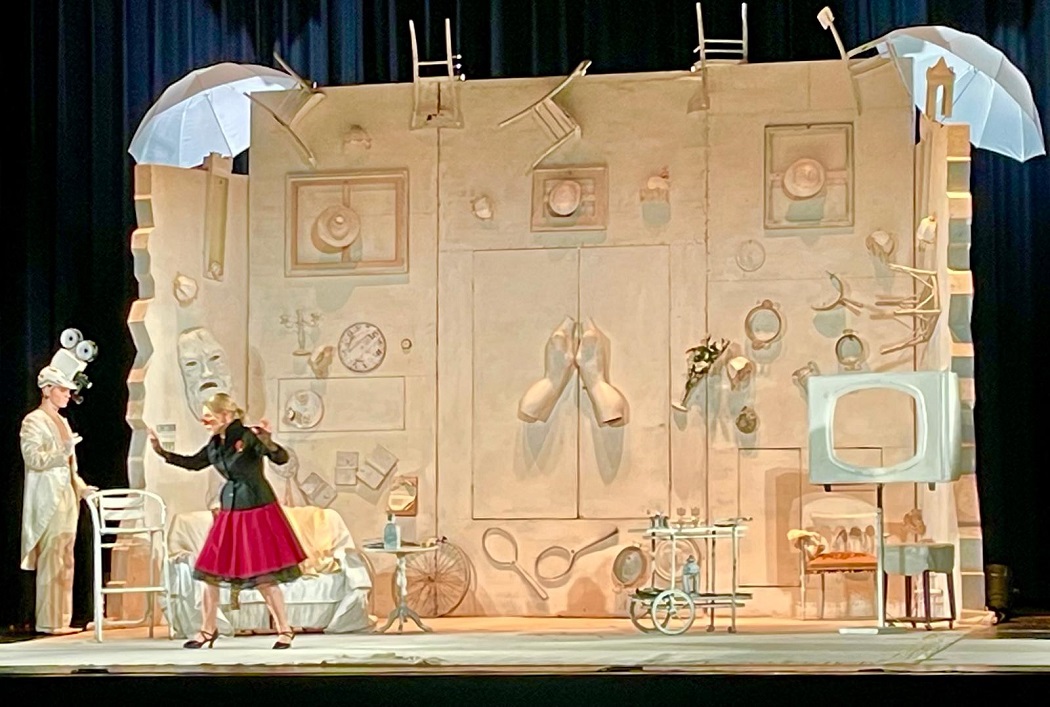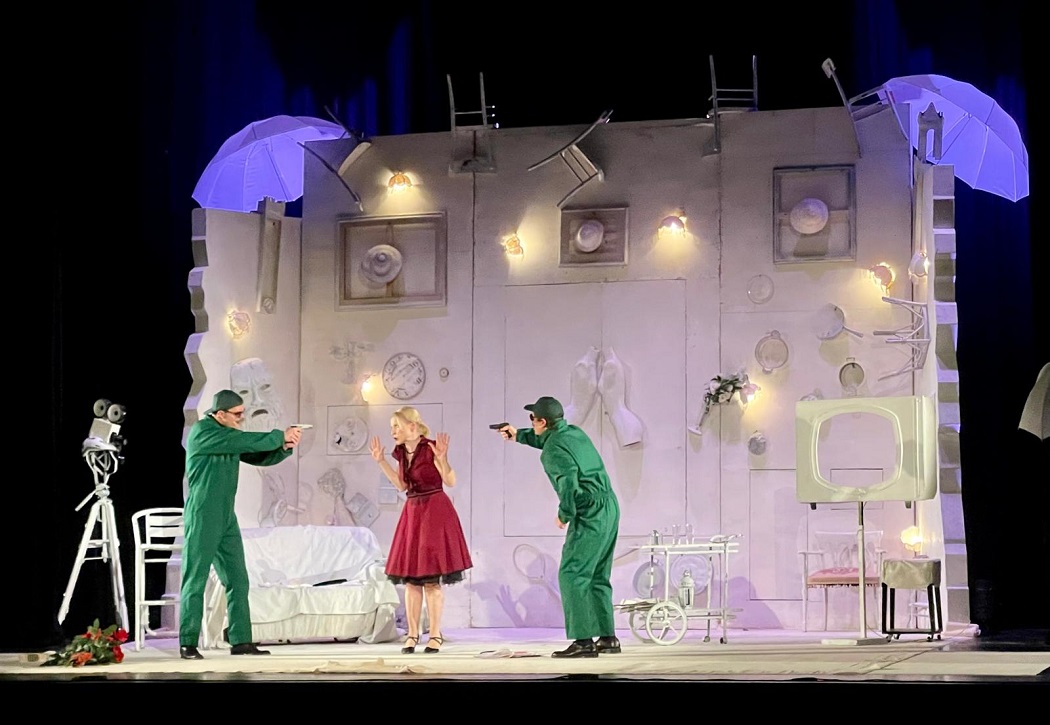
Another sold-out show for a great Gaia de Laurentis who held the stage practically alone for the entire show ‘Una Giornata Qualunque’, a true star performer.
Once upon a time this term was used especially for men who dominated the stage with their presence. The female way of acting was often introspective and subdued for which different definitions were sought.
But Gaia de Laurentis was a star performer giving a strength to her role that overcame the fragility of the character described in the text.
The show ‘Una Giornata Qualunque’ (An Ordinary Day), staged in the Colleferro theater season, tells the story of a depressed woman who, a year after her divorce from her husband, wants to commit suicide by filming her suicide in order to morally blame her ex-husband.
The text is spectacular, written by Nobel Prize winner Dario Fo and his wife Franca Rame and is characterized by a very fast succession of scenes told by the protagonist. When I sow Dario Fo, I was always surprised by the incredible number of words and the speed with which he pronounced them. A speed that gives dynamism to his shows even when they are monologues without scenery.
I have always thought that this way of representing a text was very tiring for the actor and that Dario's greatness was also in this very personal way of acting.
Una Giornata Qualunque has the same structure as Dario's shows: few pauses and a pressing rhythm that forces the actress to reveal herself to the audience with a succession of scenes that are not those on stage but those of her mind.
While Gaia was acting, I was taken by the text, but also by her skill that took me inside the mind of this woman and made me feel her emotions: I could experience the story on my skin while sitting in the audience.




Lorenzo Artissunch , Gaia De Laurentis , the director Stefano Artissunch , the Mayor Pierluigi Sanna and Emanuele Girolami

A round of applause also to the director Stefano Artissunch who also interpreted (in Sardinian) some women on the phone who spoke to Gaia and to his son Lorenzo Artissunch who humanized technology. Lorenzo, in fact, played the role of the camera that was supposed to film the suicide scene, with a spectacular mime game, and also the television that at a certain point started to talk to Gaia.
Both scenes immediately brought me back to the humanization of technology and AI, a much-debated topic on a geopolitical but also philosophical level. How much does technology influence our lives and how much more pervasive will it be by drawing the contours of our existence?
Given that I did not use AI to write this article, we must reflect because we risk regressing mentally and, perhaps, emotionally. And more and more culture is supported by AI. But not in the theater that will always and only remain human.
The text by Dario Fo and Franca Rame anticipated this historical moment by giving technology a saving role. In fact, thanks to some phone calls and television, the protagonist finds the desire to have new friendships and to give a new meaning to her life.
A show that is an absolute must-see and an excellent choice by the Colleferro administration for this season that practically sees every show sold out.
the director Stefano Artissunch , Gaia De Laurentis and Lorenzo Artissunch










Follow us